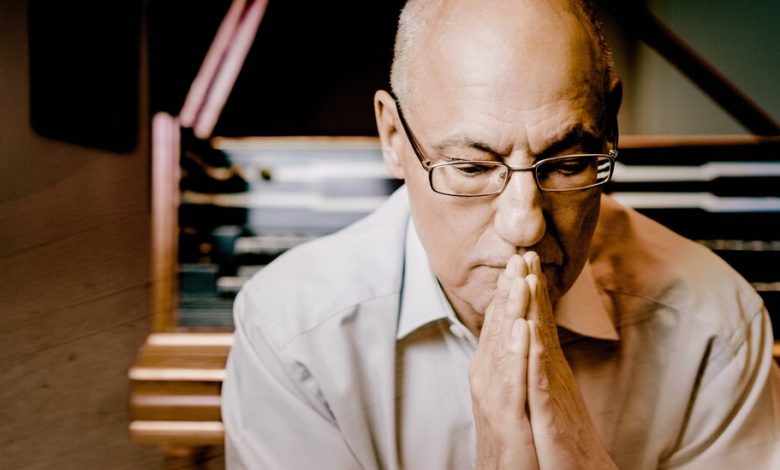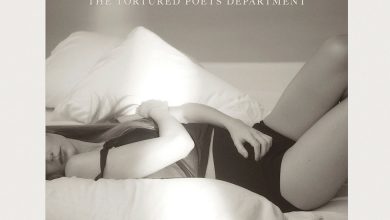How Cancer Has Influenced, but Not Controlled, a Musician’s Work

The harpsichordist and pianist Andreas Staier has never been a morning person. And since August 2019, when he was diagnosed with primary myelofibrosis, a rare bone marrow cancer, he has felt what he called a fundamental fear most vividly in the mornings.
Playing music helps. After getting out of bed, Staier goes to one of his keyboard instruments and sight-reads a piece or practices a tricky spot. “The music stays as beautiful as it is,” he said in an interview at his home in Cologne, Germany. “It doesn’t change. And that is very, very consoling.”
Staier, 68, has shaped the European early music movement for 40 years. Born in Göttingen, Germany, he joined the period instrument ensemble Musica Antiqua Köln as a harpsichordist in 1983. In 1986, he left the group to concentrate on solo and chamber music, with an emphasis on the harpsichord and the fortepiano, a softer-sounding predecessor of the modern grand piano.
His discography, of about 60 recordings, has remarkable range. He has uncovered forgotten gems from the Portuguese Baroque and lent startling intimacy and timbral variety to works as familiar as Bach’s “The Well-Tempered Clavier” and Schubert’s Four Impromptus (D. 935). His 2006 album of Beethoven’s Violin Sonatas No. 4 and 7 with Daniel Pelec highlights the ferocity barely held at bay by the pieces’ Classical forms.
Staier “plays according to his convictions,” Pelec said in a phone interview. “There’s a big portion of knowledge, but also intuition and freedom. It’s a great combination: With his knowledge, but he’ll also say, ‘Let’s play it as we like it and take pleasure in it.’”
From Staier’s understanding of musical styles come surprising connections. His 2011 disc of C.P.E. Bach’s keyboard concertos with the Freiburg Baroque Orchestra seems to find a through line between those works and American Minimalism; his 2014 interpretation of Robert Schumann’s “Fantasy Pieces” discovers the restrained, Mozartean elegance in Romantic flights of fantasy. Many pianists have followed Staier in performing on keyboard instruments beyond the default grand piano from Steinway & Sons.
He was about to accept a guest professorship at the Cologne University of Music when the conservatory asked him to undergo a routine physical examination. His blood test was highly unusual. “And then you do several dozen tests, and at some point, the result comes back,” Staier said.
Primary myelofibrosis is not improved by immediate detection. “You can’t do anything except wait and watch your blood levels get worse,” Staier said, “and then, at the end, a stem cell transplant.”
Staier had a few traumatic experiences with doctors. “Like: ‘For God’s sake, your blood results look terrible. Consider yourself dead,’” he recalled. Then, a friend helped him find an oncologist who specialized in his disease and was more optimistic, telling Staier to scan each of his blood tests, send a copy to him, then put them in a binder without looking at them. “It was a real proof of love,” Staier said.
Several months after the diagnosis, Covid-19 arrived in Germany, and Staier lost the rhythm of his performing life. He decided to focus on musical loose ends. First, he thought about recording Beethoven’s last three piano sonatas, but the idea was “not very original as a program,” he said.
Staier had already been starting his days with “The Well-Tempered Clavier,” following the advice of Schumann, who considered those fugues a musicians’ “daily bread.” He also owned a harpsichord, copied from a 1734 instrument, with an unusually low register. (“You can really get into the mud with it,” he said.) The variety of different colors available on the instrument was ideally suited to the scale of Bach’s two-book, hourslong solo work. And so he began to record it.
As he prepared the album, which was released in two parts, in 2021 and 2023, he encountered sections of “The Well-Tempered Clavier” that he hadn’t played before. Considering his diagnosis, Staier realized that there were also are some pieces he might never play again. The last time he performed Beethoven’s “Diabelli” Variations — he considers his recording of the piece one of his best — he was unhappy with the result, and wondered whether he would have to let that work go.
“It’s a question of priorities,” he said. “Should I sit down and practice the ‘Diabelli’ Variations? Considering that it takes me more time for a less secure result than 10 years ago, you do sometimes think, ‘Is it still worth it?’”
In addition to his core repertoire, Staier has always been interested in contemporary music. When he attends concerts, he prefers to hear works from the 20th and 21st centuries. Over the years, he made sketches for various compositions of his own, but never finished a piece.
After his diagnosis, and during the pandemic, Staier continued sketching. “I didn’t start like, ‘I want to compose, and it will be done at some point,’” he said. “It was more of a way to question myself about how I understand music.”
Staier had begun “Anklänge,” a series of six pieces for harpsichord, around 10 years ago. Then, with concert life on pause during the pandemic, Staier had long conversations with his composer friends Brice Pauset, to whom the work is dedicated, and Isabel Mundry, a professor in Zurich, about writing music.
“I thought, ‘This is the moment for me to at least bring it to the point where I can really say, I’ll leave it be and throw it out, or finish it,’” Staier said of his piece. “And those are, of course, thoughts that are very connected to the finiteness of human life.”
“Anklänge” demonstrated “both the invention of a personal musical language between his ideas and the harpsichord,” Pauset said in a phone interview, “and the crystallization of many different historical stages of harpsichord playing.”
In January 2023, Staier premiered the work at the Cologne Philharmonie, alongside music by Couperin, Bach and others. The critic Volker Hagedorn praised “Staier’s consistent and comprehensible musical language,” hearing references to Wolfgang Rihm, György Ligeti and Baroque composers.
That performance was Staier’s last artistic activity before undertaking a stem-cell transplant at a hospital in Hamburg; he scheduled the procedure for January 2023 because he had relatively few concerts planned then. Because his immune system was weak, he was largely in isolation, allowed one hour a week with a guest, in full personal protective equipment.
The procedure appears to have been a qualified success. “I’m sitting between the chairs,” Staier said. “It doesn’t look bad, but things don’t look really good either.”
After the transplant, Staier was eager to return to performing, but his doctors disagreed on how much time he’d need to recover from his operation. One told him he’d be able to play again after three months; another, at least nine months. “Try to put together a nice calendar of concerts with that information,” Staier said.
In June 2023, he played his first concert since the transplant, performing music by Haydn, Mozart and Schubert. “In terms of concentration, it wasn’t a problem at all,” Staier said. Still, he wondered if playing fewer concerts would make his stage fright worse. “It’s not at all easy to say, ‘I’ll just work less,’ because then you get a lot more nervous for every concert,” he said.
“I have enough reason to worry with my cancer,” he added, “and if I start to brood over my piano playing, whether it’s good enough — no thanks, I just won’t do it.”
Staier doesn’t want to give his disease any “authority over my musical life,” he said. “It already has enough authority. It takes up so much of my time, with all the hospital visits and checkups.”
He doesn’t want to let the disease influence the music. And it hasn’t. Staier still feels that “fundamental fear” in the mornings, but he has stopped experiencing stage fright. He compared himself to the youth in the Grimms’ fairy tale who goes forth to learn what fear is.
“It’s just beautiful that I can do this,” he said. “Why should I ruin it for myself by getting nervous?”



